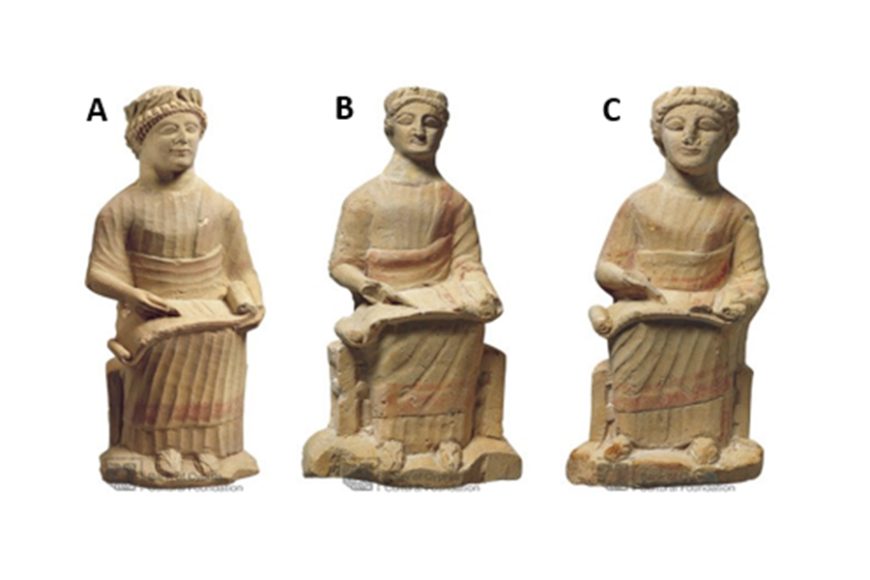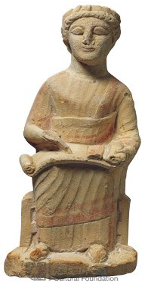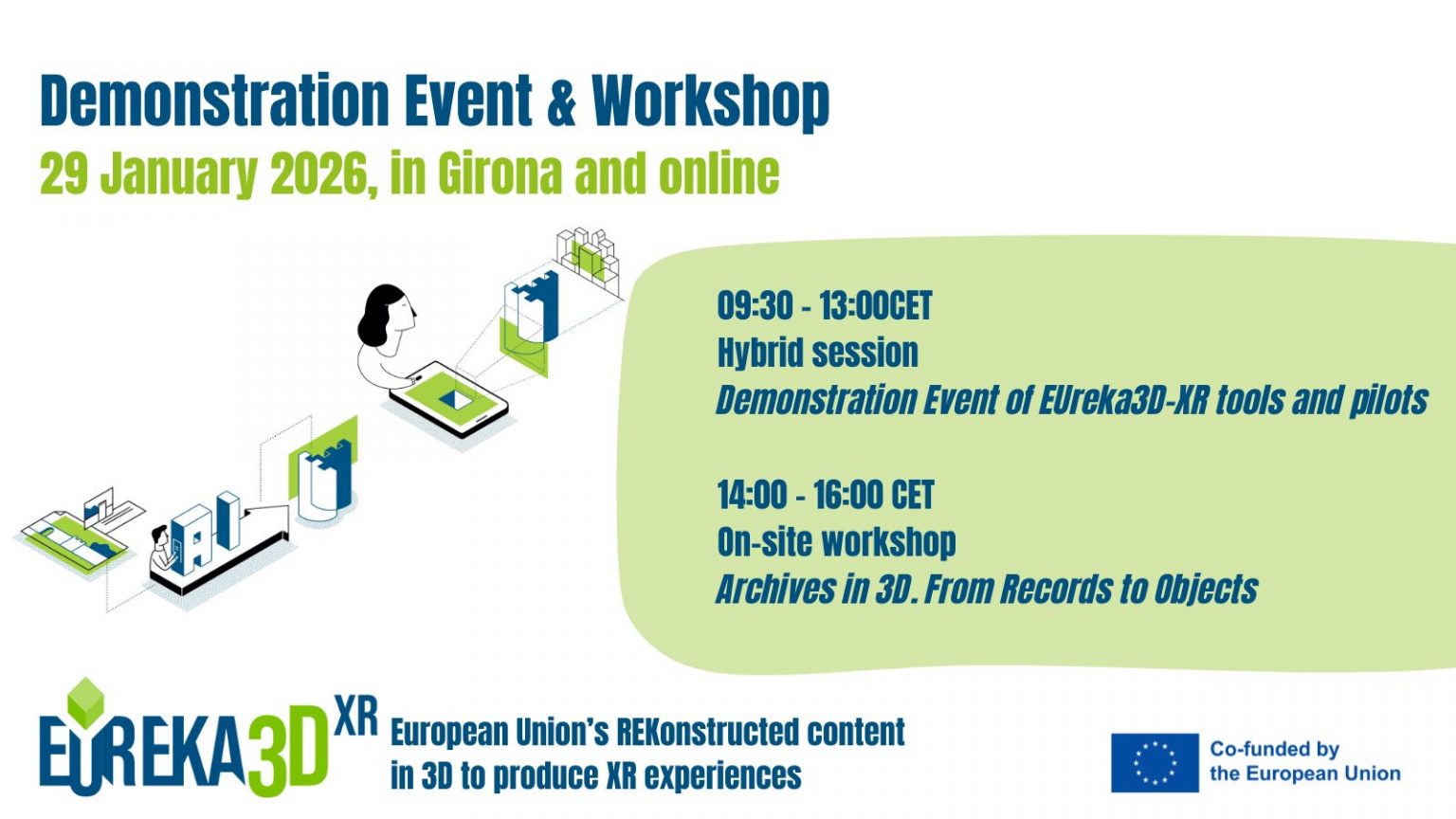The three limestone statuettes under study, dating from the 5th century B.C to the middle of the 4th, belong to the type known as temple-boys. They are part of the George and Nefeli Giabra Pieridis Collection of Cypriote antiquities which were donated at the Bank of Cyprus Cultural Foundation where they are currently in display.
The type of the temple-boy was offered to both male and female divinities as votive offerings and they are rarely found in tombs. The most plausible theory and interpretation about temple-boys is that they were connected with circumcision. Temple-boys limestone statuettes must have been very popular in Cyprus; three hundred of them have been assembled by Beer; fifty-one of them are in the Cesnola Collection. Examples were found also in Levant, where they may have been exported or made locally be Cypriots.
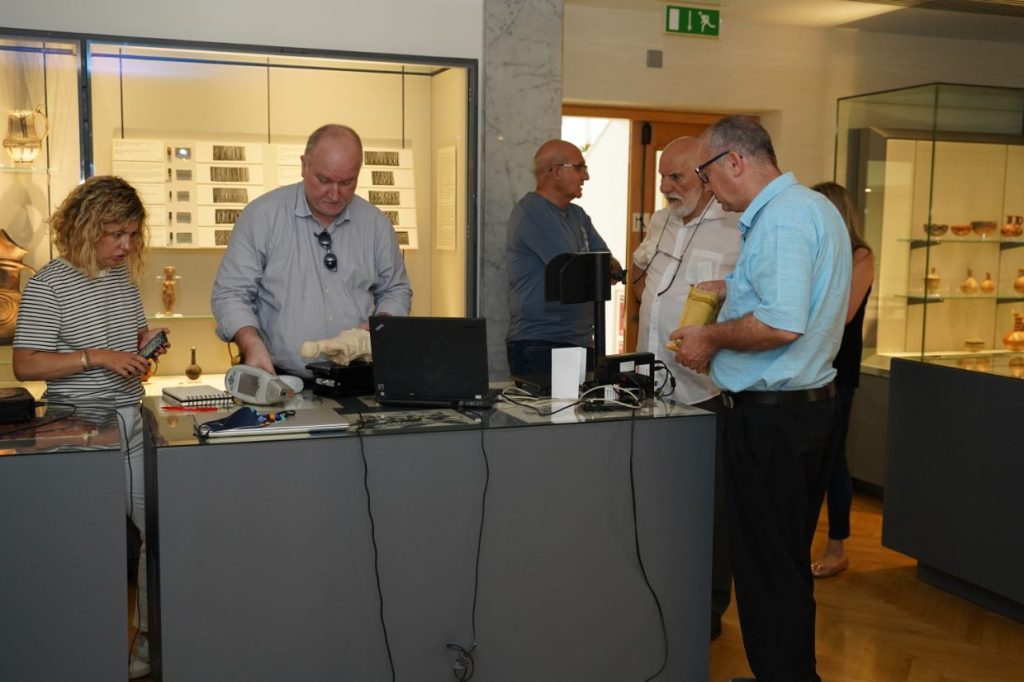
The statuettes under study displayed in Figure 167 wear a chiton and a himation, the folds of which are rather crudely rendered with shallow grooves. The sandaled feet rest on a plinth. There is a scroll spread on the knees, one edge of which the boy holds with the left hand; in the right hand he holds a stylus, resting on the papyrus. Curly hair; he wears a wreath of leaves round his head. Traces of red paint on the garments, on lips and on hair.

MNEMOSYNE’s Research Commitment
The case study of the three limestone statuettes of temple boys will allow the ERA Chair team members to focus on the characterization of polychromy on limestone sculptures from Cyprus. Limestone sculpture is an important expression of the Cypriot artistic production in Antiquity. Polychromy components can be identified by means of physico-chemical analytical techniques (e.g., x-ray fluorescence spectroscopy, FTIR[1] microscopy). The analytical techniques can aid on the identification of the original pigments present on the statuettes. Traces of red paint are visible to the naked eye on the garments, lips and hair of the statuettes (Figure 167). However, other pigments undetectable to the naked eye are possibly present and can be identified. The proper identification of original pigments may provide information for art-historical and archaeological studies on aspects such as material and symbolic status of statues, manufacturing techniques or workshops secrets, diachronic developments of style and technologies.
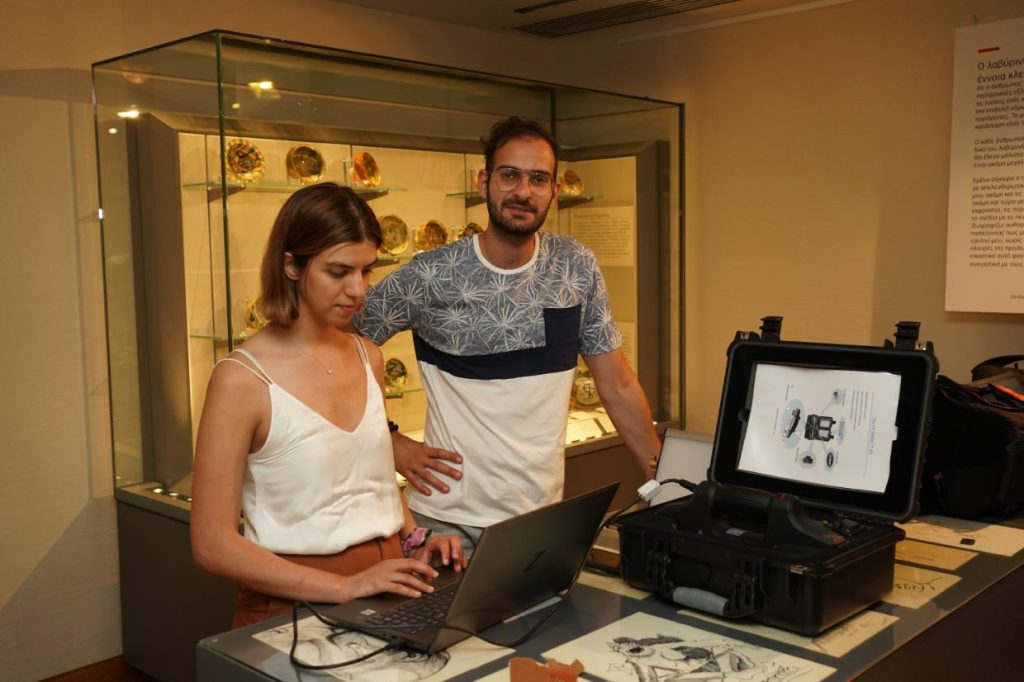
MNEMOSYNE research group will also focus on the digital reconstruction of the statuettes. Shedding light on the polychromy components of the limestone statues from Cyprus will also allow the digital reconstruction of the colors, visualizing the statuettes in their original forms. Group 3, after receiving the processed and structured data from Groups 1 and 2 (D5.2, sections 4.1.1, 4.1.2, 4.2.1, 4.2.2) will be able to create a virtual exhibition of the statues in their original form, through the implementation of XR technologies that can provide to users of different background the unique opportunity to examine them closely, employing at the same time, innovative, user-centered storytelling methodologies (D5.2, sections 4.3.5 and 4.3.6).
Essential Bibliography
- Karageorghis, Vassos, and John Boardman. Ancient art from Cyprus: in the collection of George and Nefeli Giabra Pierides. Kapon Editions, 2002.
- Gasanova, Svetlana, et al. “Non-destructive in situ analysis of polychromy on ancient Cypriot sculptures.” Archaeological and Anthropological Sciences 10.1 (2018): 83-95

